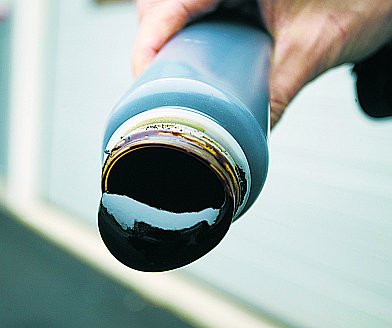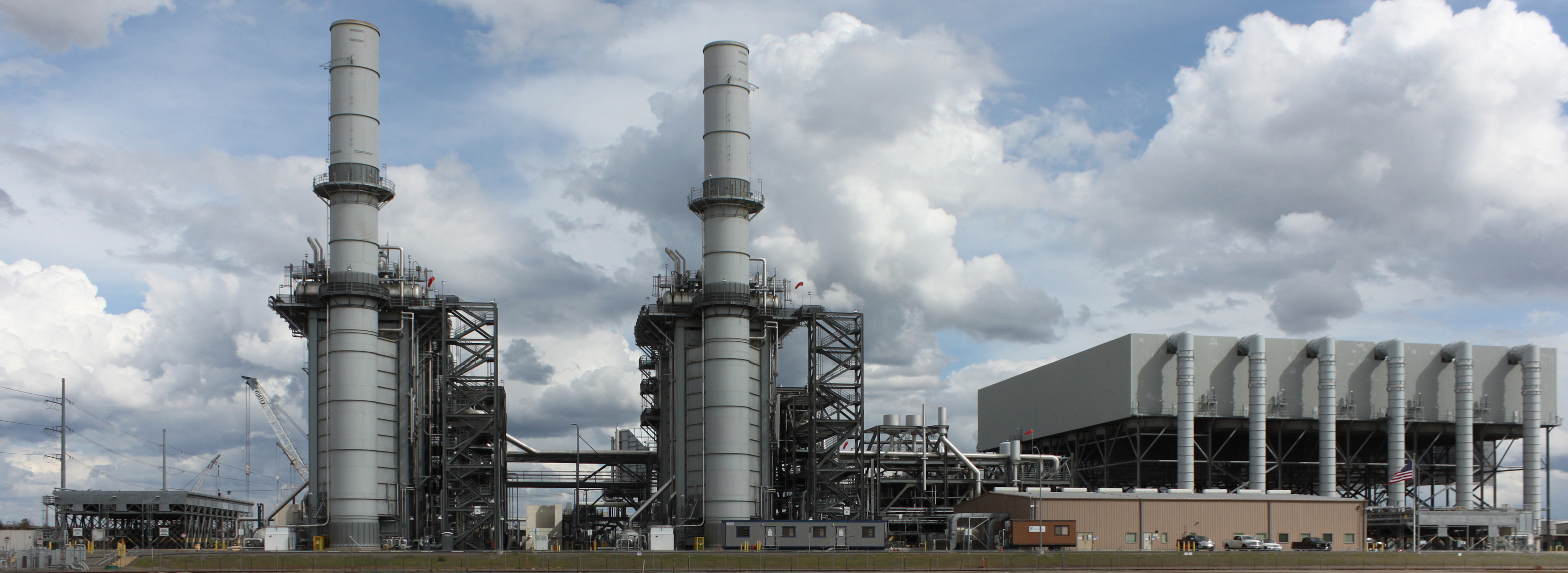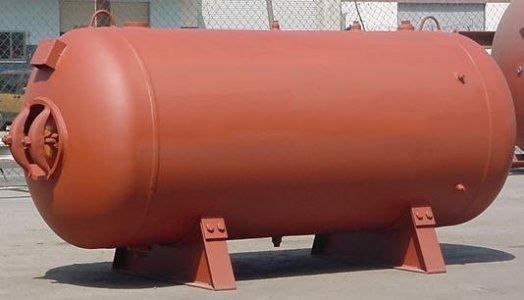|
Boiler
A boiler is a closed vessel in which fluid (generally water) is heated. The fluid does not necessarily boil. The heated or vaporized fluid exits the boiler for use in various processes or heating applications, including water heating, central heating, boiler-based power generation, cooking, and sanitation. Heat sources In a fossil fuel power plant using a steam cycle for power generation, the primary heat source will be combustion of coal, oil, or natural gas. In some cases byproduct fuel such as the carbon monoxide rich offgasses of a coke battery can be burned to heat a boiler; biofuels such as bagasse, where economically available, can also be used. In a nuclear power plant, boilers called steam generators are heated by the heat produced by nuclear fission. Where a large volume of hot gas is available from some process, a heat recovery steam generator or recovery boiler can use the heat to produce steam, with little or no extra fuel consumed; such a configuration is ... [...More Info...] [...Related Items...] OR: [Wikipedia] [Google] [Baidu] [Amazon] |
Steam Locomotive
A steam locomotive is a locomotive that provides the force to move itself and other vehicles by means of the expansion of steam. It is fuelled by burning combustible material (usually coal, Fuel oil, oil or, rarely, Wood fuel, wood) to heat water in the locomotive's Boiler (power generation), boiler to the point where it becomes gaseous and its volume increases 1,700 times. Functionally, it is a steam engine on wheels. In most locomotives, the steam is admitted alternately to each end of its Steam locomotive components, cylinders in which pistons are mechanically connected to the locomotive's main wheels. Fuel and water supplies are usually carried with the locomotive, either on the locomotive itself or in a Tender (rail), tender coupled to it. #Variations, Variations in this general design include electrically powered boilers, turbines in place of pistons, and using steam generated externally. Steam locomotives were first developed in the United Kingdom of Great Britain an ... [...More Info...] [...Related Items...] OR: [Wikipedia] [Google] [Baidu] [Amazon] |
Boiler (power Generation)
file:Dampfkessel für eine Stationärdampfmaschine im Textilmuseum Bocholt.jpg, An industrial boiler, originally used for supplying steam to a stationary steam engine A boiler or steam generator is a device used to create steam by applying heat energy to water. Although the definitions are somewhat flexible, it can be said that older steam generators were commonly termed ''boilers'' and worked at low to medium pressure () but, at pressures above this, it is more usual to speak of a ''steam generator''. A boiler or steam generator is used wherever a source of steam is required. The form and size depends on the application: mobile steam engines such as steam locomotives, portable engines and Traction engine, steam-powered road vehicles typically use a smaller boiler that forms an integral part of the vehicle; stationary steam engines, industrial installations and power stations will usually have a larger separate steam generating facility connected to the point-of-use by piping. ... [...More Info...] [...Related Items...] OR: [Wikipedia] [Google] [Baidu] [Amazon] |
Recovery Boiler
Recovery boiler is the part of kraft process of wood pulp, pulping where chemicals for white liquor are recovered and reformed from black liquor, which contains lignin from previously processed wood. The black liquor is burned, generating heat, which is usually used in the process of making electricity, much as in a conventional steam power plant. The invention of the recovery boiler by G.H. Tomlinson in the early 1930s was a milestone in the advancement of the kraft process. Recovery boilers are also used in the (less common) sulfite process of wood pulping; this article deals only with recovery boiler use in the kraft process. Function of recovery boilers Concentrated black liquor contains organic dissolved wood residue in addition to sodium sulfate from the cooking chemicals added at the digester. Combustion of the organic portion of chemicals produces heat. In the recovery boiler, heat is used to produce high pressure steam, which is used to generate electricity in a turbin ... [...More Info...] [...Related Items...] OR: [Wikipedia] [Google] [Baidu] [Amazon] |
Firebox (locomotive)
In a steam engine, the firebox is the area where the fuel is burned, producing heat to boil the water in the boiler. Most are somewhat box-shaped, hence the name. The hot gases generated in the firebox are pulled through a rack of tubes running through the boiler. Steam locomotive fire tube firebox In the standard steam locomotive fire-tube boiler, the firebox is surrounded by water space on five sides. The bottom of the firebox is open to atmospheric pressure, but covered by fire grates (solid fuel) or a firing pan (liquid fuel). If the engine burns solid fuel, like wood or coal, there is a grate covering most of the bottom of the firebox to hold the fire. An ashpan, mounted underneath the firebox and below the grates, catches and collects hot embers, ashes, and other solid combustion waste as it falls through the grates. In a coal-burning locomotive, the grates may be shaken to clean dead ash from the bottom of the fire. They are shaken either manually or (in larger locomoti ... [...More Info...] [...Related Items...] OR: [Wikipedia] [Google] [Baidu] [Amazon] |
Pulverized Coal-fired Boiler
A pulverized coal-fired boiler is an industrial or utility boiler that generates thermal energy by burning pulverized coal (also known as powdered coal or coal dust since it is as fine as face powder in cosmetic makeup) that is blown into the firebox. The basic idea of a firing system using pulverised fuel is to use the whole volume of the furnace for the combustion of solid fuels. Coal is ground to the size of a fine grain, mixed with air and burned in the flue gas flow. Biomass and other materials can also be added to the mixture. Coal contains mineral matter which is converted to ash during combustion. The ash is removed as bottom ash and fly ash. The bottom ash is removed at the furnace bottom. This type of boiler dominates coal-fired power stations, providing steam to drive large turbines. History Prior to the developments leading to the use of pulverized coal, most boilers utilized grate firing where the fuel was mechanically distributed onto a moving grate at the botto ... [...More Info...] [...Related Items...] OR: [Wikipedia] [Google] [Baidu] [Amazon] |
Central Heating
A central heating system provides warmth to a number of spaces within a building from one main source of heat. A central heating system has a Furnace (central heating), furnace that converts fuel or electricity to heat through processes. The heat is circulated through the building either by fans forcing heated air through Duct (flow), ducts, circulation of low-pressure steam to Radiator, radiators in each heated room, or Pump, pumps that circulate hot water through room radiators. Primary energy sources may be fuels like coal or wood, oil, kerosene, natural gas, or electricity. Compared with systems such as Fireplace, fireplaces and Wood-burning stove, wood stoves, a central heating plant offers improved uniformity of temperature control over a building, usually including automatic control of the furnace. Large homes or buildings may be divided into individually controllable zones with their own Temperature control, temperature controls. Automatic fuel (and sometimes ash) handli ... [...More Info...] [...Related Items...] OR: [Wikipedia] [Google] [Baidu] [Amazon] |
Combined Cycle
A combined cycle power plant is an assembly of heat engines that work in tandem from the same source of heat, converting it into mechanical energy. On land, when used to make electricity the most common type is called a combined cycle gas turbine (CCGT) plant, which is a kind of gas-fired power plant. The same principle is also used for marine propulsion, where it is called a combined gas and steam (COGAS) plant. Combining two or more thermodynamic cycles improves overall efficiency, which reduces fuel costs. The principle is that after completing its cycle in the first engine, the working fluid (the exhaust) is still hot enough that a second subsequent heat engine can extract energy from the heat in the exhaust. Usually the heat passes through a heat exchanger so that the two engines can use different working fluids. By generating power from multiple streams of work, the overall efficiency can be increased by 50–60%. That is, from an overall efficiency of the system of say ... [...More Info...] [...Related Items...] OR: [Wikipedia] [Google] [Baidu] [Amazon] |
Live Steam
Live steam is steam under pressure, obtained by heating water in a boiler. The steam may be used to operate stationary or moving equipment. A live steam machine or device is one powered by steam, but the term is usually reserved for those that are replicas, scale models, toys, or otherwise used for heritage, museum, entertainment, or recreational purposes, to distinguish them from similar devices powered by electricity, internal combustion, or some other more convenient method but designed to look as if they are steam-powered. Revenue-earning steam-powered machines such as mainline and narrow gauge steam locomotives, full-sized steamships, and the worldwide electric power-generating industry steam turbines are not normally referred to as "live steam". Steamrollers and traction engines are popular, in 1:4 or 1:3 scale, as are model stationary steam engines, ranging from pocket-size to 1:2 scale. Railroads or railways Ridable, large-scale live steam railroading on a ba ... [...More Info...] [...Related Items...] OR: [Wikipedia] [Google] [Baidu] [Amazon] |
Wrought Iron
Wrought iron is an iron alloy with a very low carbon content (less than 0.05%) in contrast to that of cast iron (2.1% to 4.5%), or 0.25 for low carbon "mild" steel. Wrought iron is manufactured by heating and melting high carbon cast iron in an open charcoal or coke hearth or furnace in a process known as puddling. The high temperatures cause the excess carbon to oxidise, the iron being stirred or puddled during the process in order to achieve this. As the carbon content reduces, the melting point of the iron increases, ultimately to a level which is higher than can be achieved by the hearth, hence the wrought iron is never fully molten and many impurities remain. The primary advantage of wrought iron over cast iron is its malleability - where cast iron is too brittle to bend or shape without breaking, wrought iron is highly malleable, and much easier to bend. Wrought iron is a semi-fused mass of iron with fibrous slag inclusions (up to 2% by weight), which give it ... [...More Info...] [...Related Items...] OR: [Wikipedia] [Google] [Baidu] [Amazon] |
Boiler (water Heating)
The term boiler may refer to an appliance for heating water. Applications include water heating and central heating. Operation The boiler heats water to a temperature controlled by a thermostat. The water then flows (either by natural circulation or by a pump) to radiators in the rooms which are to be heated. Water also flows through a coil in the hot water tank to heat a separate mass of water for bathing, etc. Condensing boiler Back boiler A back boiler is a device which is fitted to a residential heating stove or open fireplace to enable it to provide both room heat and domestic hot water or central heating. See also * Electric water boiler * Heat-only boiler station * Multi-fuel stove A multi-fuel stove is similar to a wood-burning stove in appearance and design. Multifuel refers to the capability of the stove to burn wood and also coal, wood pellets, or peat. Stoves that have a grate for the fire to burn on and a removable ash ... References Heating, ventilation, ... [...More Info...] [...Related Items...] OR: [Wikipedia] [Google] [Baidu] [Amazon] |
Pressure Vessel
A pressure vessel is a container designed to hold gases or liquids at a pressure substantially different from the ambient pressure. Construction methods and materials may be chosen to suit the pressure application, and will depend on the size of the vessel, the contents, working pressure, mass constraints, and the number of items required. Pressure vessels can be dangerous, and fatal accidents have occurred in the history of their development and operation. Consequently, pressure vessel design, manufacture, and operation are regulated by engineering authorities backed by legislation. For these reasons, the definition of a pressure vessel varies from country to country. The design involves parameters such as maximum safe operating pressure and temperature, safety factor, corrosion allowance and minimum design temperature (for brittle fracture). Construction is tested using nondestructive testing, such as ultrasonic testing, radiography, and pressure tests. Hydrostatic pressure t ... [...More Info...] [...Related Items...] OR: [Wikipedia] [Google] [Baidu] [Amazon] |
Fossil Fuel Power Plant
A fossil fuel power station is a thermal power station that burns fossil fuel, such as coal, oil, or natural gas, to produce electricity. Fossil fuel power stations have machines that convert the heat energy of combustion into mechanical energy, which then powers an electrical generator. The prime mover may be a steam turbine, a gas turbine or, in small plants, a reciprocating gas engine. All plants use the energy extracted from the expansion of a hot gas, either steam or combustion gases. Although different energy conversion methods exist, all thermal power station conversion methods have their efficiency limited by the Carnot efficiency and therefore produce waste heat. Fossil fuel power stations provide most of the electrical energy used in the world. Some fossil-fired power stations are designed for continuous operation as baseload power plants, while others are used as peaker plants. However, starting from the 2010s, in many countries plants designed for baseload ... [...More Info...] [...Related Items...] OR: [Wikipedia] [Google] [Baidu] [Amazon] |








